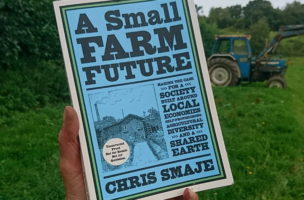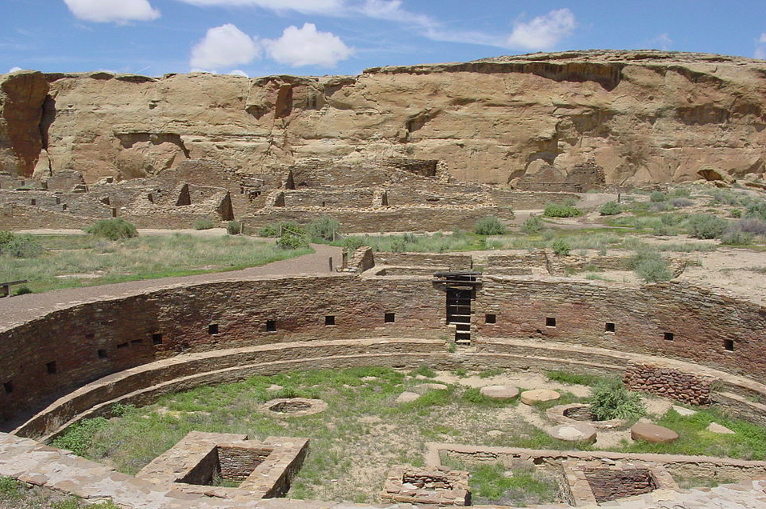 The quotation in my title comes from a brief online review of my book from someone who clearly wasn’t a fan. I suspect the person concerned didn’t actually read the book, but no matter. For my part, it seems to me quite likely that a billion people or more will die prematurely if we don’t soon implement something like the small farm future that I describe in the book. It’s worth sitting awhile with that contradiction. What an extraordinary moment in history when different people think that either persisting with or not persisting with the regnant political economy might slay us in such unimaginable numbers.
The quotation in my title comes from a brief online review of my book from someone who clearly wasn’t a fan. I suspect the person concerned didn’t actually read the book, but no matter. For my part, it seems to me quite likely that a billion people or more will die prematurely if we don’t soon implement something like the small farm future that I describe in the book. It’s worth sitting awhile with that contradiction. What an extraordinary moment in history when different people think that either persisting with or not persisting with the regnant political economy might slay us in such unimaginable numbers.
Maybe I’ll come back to that in another post. Here, I just want to make a few points about famine in societies of the past, present and future, building on the analysis from Chapter 10 of my book – famine being, along with its companions war, disease and poverty, among the likeliest contenders for causing the untimely deaths of billions.
So, one of the objections to the idea of an agrarian localist or a small farm future indeed is the notion that they’re prey to hunger or famine in ways that modern societies are not. The term ‘subsistence farmer’ hardly helps, routinely associated as it is with other words like ‘scratching’ or ‘bare’.
This conceals a more complex reality. As I document in my book, ‘subsistence’ farmers have generally been well capable of creating a thriving and diverse livelihood for themselves, and building in safeguards against poor seasons. Indeed, you can make a strong case that small-scale local farming systems are more resilient to famine than the present nexus of large-scale commercial farms and urbanism. Maybe you can make the contrary case too. But the scale of farm operation will make little difference to the famines that will arise in worst-case climate, socioeconomic and strategic scenarios of the future. I see a turn to low-impact, local, small-scale farming basically as our best option now for avoiding those worst-case scenarios, and probably our only option for dealing with their consequences should they occur.
Nevertheless, it’s historically true that small-scale ‘subsistence’ farmers sometimes pooled resources on a larger scale in order to even out the inherent uncertainties of farming, especially in environmentally challenging situations. It seems the Chacoan people of what’s now New Mexico did this from around 700-1200 AD, creating a centralized state that drew various communities into its orbit. The Chacoan state’s main function was redistributive in the face of livelihood uncertainties, and when it could no longer continue to underwrite its people’s welfare they went their separate ways.
Contrast this with Pierre Goubert’s analysis of the peasantry in 17th century France:
The majority of the poor in the countryside farmed only two or three acres, and tried to live off this land completely, which they were more or less able to do as long as the weather was kind and the harvests were good. But they were all forced to find money with which to pay the royal taxes (which went up sharply after 1635), as they had to be paid in coin, as well as to pay seigneurial and other dues. That is why they always had to take their eggs, young cocks, butter and cheese, and the best of the fruit and vegetables to market, or to the neighbouring big house….They could keep little for themselves except what was strictly necessary or unsaleable1
It’s worth bearing in mind that underlying reality when contemplating state formation in early modern Europe and the splendours of its royal courts.
Or consider this report from a citizen of the Dutch town of Limburg in 1790 where trade was limited and farming ‘almost medieval’: “One ate and drank what the farm provided. Because very little could be sold, the farmer had ample to eat”2.
And a final example, running counter to Monty Python’s famous historical thesis, and with some bearing on recent discussions here about the healthiness of animal products: research on ‘Dark Age’ Britain in the aftermath of Roman departure suggests that “an increase in animal protein (including the dairy products that were gained from a greater emphasis on pastoral husbandry) and a concomitant decrease in the proportion of carbohydrates in everyday diets appear to have led to general improvements in health across the board, visible in increases in average height, better dental health, and higher recovery rates from infection”, and hence “the beneficial effect on peasant household economies of the withdrawal of Roman secular and military administration”3.
So against redistributive states like the Chacoan, or the de facto self-reliance of Limburg, perhaps we can counterpose more hunger-prone scenarios fostered by large predatory states – the Romans in Britain and early modern states in Europe among them.
In reality, the distinction is perhaps overdrawn. There were hierarchical elements in the Chacoan state, and there were ubiquitous uprisings and complex social alignments in Europe and elsewhere against the predations of overmighty states that ensured a redistributive aspect. This latter point is important, and I’ll be pressing it in future – predatory states are sometimes willing to extract resources from ordinary people up to the point of rank starvation if they can get away with it, but what often stops them from doing so is the ability of ordinary people to organize politically and make themselves protagonists in the political drama of the state.
My examples so far have all been quite a way back in the past. What of present and recent times? Famine expert Alex de Waal calls the first part of the 20th century “the most dreadful period of famine in world history”4 when modern leaders of various political colours such as Adolf Hitler, Winston Churchill, Josef Stalin and (later) Mao Zedong either actively created famines or connived at them in pursuit of their wider political goals. It’s perhaps worth noting that communist leaders like Stalin and Mao particularly inflicted hunger on the peasant classes whose activism was substantially responsible for putting them into power, in pursuit of breakneck industrialization policies dictated by Marxist-Leninist doctrines alien to peasant communism. Such famines of 20th century ‘development’ came on the heels of 19th century famines of colonial capitalism in other parts of Asia and Latin America. So there are good grounds for questioning the notion that famines were banished by modernization.
But more recently the incidence of major famines has declined, leaving us only with the small matter of chronic under-nutrition among possibly billions of people in a world that’s richer in total and per capita terms than ever before. ‘Developed’ or ‘middle income’ countries like Russia and China that experienced major famines in recent times are unlikely to experience them again in the near term, whereas ‘less developed’ countries, especially in sub-Saharan Africa, are on shakier ground. This prompts a narrative that capitalist or industrial development is the vanquisher of famine, and that we need more of it to finally banish it from the global scene.
I think this narrative is mistaken. I also think it rests on a horrifically ends-justify-means view of history that implicitly shrugs off the deaths of past millions as an acceptable cost of modernization. For all that, I’m as happy as anyone to celebrate the decline of major famines in the present. But it’s important to note they’ve declined largely because of an international humanitarian politics that considers famines unacceptable.
In A Small Farm Future I argue that we need to retain that humanitarianism, but I’m not sure that we’ll be able to do so under the auspices of our existing system of nation-states. There are already plenty of signs that this system’s mask is slipping, revealing the beggar-my-neighbour or beggar-my-populace face of the predatory state behind it. And that, in a nutshell, is why I think people are well advised to generate their own subsistence, or, better, to generate local communities that enable them to do so. If we don’t get on top of climate change (another challenge to which the existing system of states appears unequal) perhaps major famines are likely anyway, but if we leave our subsistence in the hands of the existing system of states we may well experience black swan famine events all the sooner and all the more devastatingly.
Of course, if everyone upped sticks overnight and headed to the countryside in search of a more sustainable subsistence (or if some neo-Maoist state forced them to), we certainly would experience famines and various other ghastly outcomes in short order. So the challenge is to see the writing on the wall before it’s too late and move more rationally towards a sustainable agrarianism. Or, as I put it on p.207 of my book, to choose a small farm future voluntarily in the present so as to avoid having a worse one imposed by Maos of the future.
Since we often extol the foresight of business leaders in modern capitalist society, perhaps we might learn from the example of internet billionaire Peter Thiel, who seems to have realized that in the final analysis you can’t eat money and has bought up a large spread of remote New Zealand farmland to safeguard against future uncertainties. Few of us have the means to do that, but what we can do is start working in any number of different ways to try to build a convivial agrarianism within our local communities. It won’t be easy, but if we pull it off then maybe some of us will be able to look back with pride at how we helped avoid killing a billion people.
Notes
- Pierre Goubert. 1986. The French Peasantry in the Seventeenth Century. Cambridge Univ Press, p.87.
- Geert Mak. 2010. An Island in Time. Vintage, p.55.
- Susan Oosthuizen. 2019. The Emergence of the English. ARC, pp.34-5.
- Alex de Waal. 2018. Mass Starvation: The History and Future of Famine. Polity, p.77.






